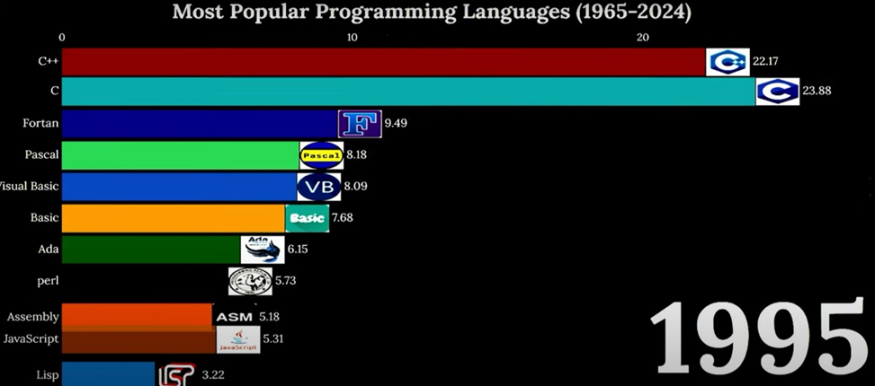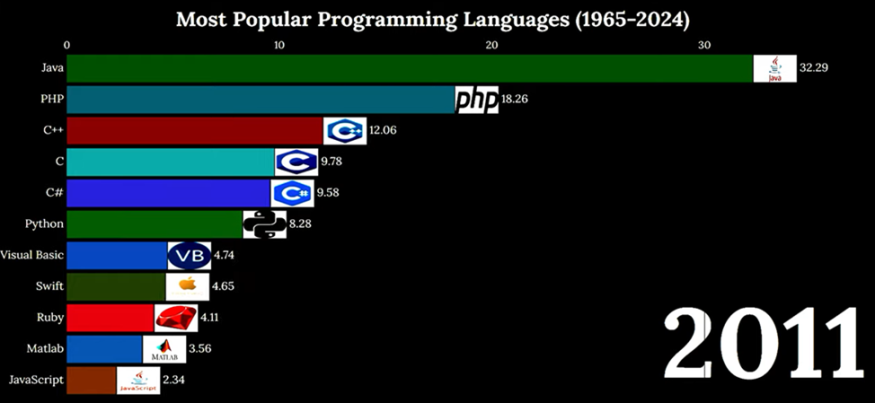Abstract: The article discusses the main advantages and challenges of using the Java programming language in modern development. Development problems are analyzed in terms of comparison with other modern programming languages and ways to solve them with the aim of further promoting Java.
Keywords: Java, programming language, advantages, performance, challenges.
Java Programming Language — Overview
Java is one of the most popular programming languages. Despite the fact that this technology has existed for more than 20 years, it still remains one of the most popular among developers. Java was developed by Sun Microsystems in the early 1990s, the project was created in 1991 and officially released to the general public in 1995.

The initial goal was to create a language for programming household appliances, but it was soon found in practice that it had much greater capabilities. As a result, developers of server software and client applications began to use Java. Since 2010, all Java rights have passed to Oracle, the company that absorbed Sun Microsystems. It was during these years that the language became most popular.

Thanks to continuous updating and improvement, the language was able to work on different platforms on a variety of operating systems, from large supercomputers to small portable electronic devices. Java quickly gained recognition among IT experts and established itself as one of the most common languages. The reasons for this popularity are obvious:
- Simplicity and object orientation. This comes with many benefits, including modularity, extensibility, and reusability.
- Platform independent. One of the most important features of the language is its ability to work on multiple platforms. Compiled Java code can run on any Java virtual machine (JVM), regardless of the underlying operating system;
- Reliability and safety. Java has powerful memory management and security features built into the language. This helps prevent most of the security problems inherent in other languages;
- Extensive set of libraries. The Java platform comes with a large set of pre-built libraries that provide functionality for I/O, networking, and utilities. Such libraries help programmers to be highly productive;
- Easy to learn. Java is one of the easiest programming languages to learn. Educational institutions introduce students to Java as a primary programming language. It has a simple syntax that allows developers to start coding in just a couple of weeks.
- Functionality optimization. With all its continuous updating, Java does not introduce completely new functions but develops existing ones and makes them better. If you look at the list of options, you will notice that each of them was implemented in one form or another in previous versions—this is an undeniable advantage for ease of learning and work;
- Availability. Java's ubiquity on the Internet and continued support from major tech giants make Java an indispensable language for any aspiring web developer.
The Java language, with its motto "Write once, run anywhere," has consistently occupied a leading position in the programming world. Trusted by large enterprises and widely used by application developers, its object-oriented nature and robust capabilities continue to make it a leader.
On the Challenges of Using Java in Modern Development
Java developers are increasingly paying attention to the challenges in the coming years. While Java is a robust programming language, it increasingly faces competition from Python and Node.js, which have rapidly gained popularity in recent years. The reason is that despite all the advantages of the language, it is not without its disadvantages. In particular, it has a more complex code base than other languages, and its syntax creates boundaries in terms of understanding and reliability. Thus, even the best custom software development enterprise may choose not to use Java in modern applications. As digital solutions evolve, engineers suspect that Java is at risk of losing the ability to make necessary upgrades and will not be able to keep up with the pace of invention—it is too large a technology to change quickly to meet modern demands. Conducting experiments in Java is more difficult than in other programming languages. As enterprises scale development, they have to think about database and application changes—Java may not be able to keep up with the scale of such experiments.
In addition, Java is increasingly facing challenges such as performance limitations, licensing costs, and difficulties in GUI development. This creates barriers to efficiency in specific situations and is assessed by developers when choosing a language for specific projects. Compared to languages like C++, Java's performance can lag due to its virtual machine and memory management. Factors such as garbage collection, poor caching configurations, and thread deadlocks will reduce performance if not managed correctly. Interpretation and JIT compilation potentially cause performance issues due to the time required to interpret and compile the code. Developers also take these performance limitations into account when choosing a language for their projects.
Keep in mind that for businesses, licensing costs, especially Oracle's commercial license terms, are a major concern. Organizations are aware of the potential costs associated with Java and evaluate whether the benefits of using the language outweigh those costs. It is important for customers to consider the long-term financial implications of their choice, especially if alternative languages offer similar functionality without associated licensing fees. GUI development using Java is also sometimes problematic due to inconsistencies and lack of custom aesthetics. Of course, there are frameworks that help in GUI development, but they are not sufficient for creating complex GUIs. The challenges Java faces in graphics development make the solution less suitable for graphics-intensive desktop applications. Alternative languages and tools are becoming more suitable for creating such applications, offering better performance and user experience.
Although Java is still widely used, other languages such as Python, JavaScript and Go are seen as lighter, more modern alternatives. Nevertheless, today, Java retains significant advantages:

Java and other languages can be used together, with Java serving as the backend and other languages supporting the frontends. Overall, although the future of the language may not be as dominant as in past years, it is still in a strong position. Continued enterprise adoption, promising updates, a thriving ecosystem, and key advantages over other languages mean that Java is likely to remain a major player for years to come. The language that helped launch the Internet continues to play an important role in creating software that changes our world.
Sources:
The Most Popular Programming Languages – 1965/2023 – New Update, statisticsanddata.org, (https://statisticsanddata.org/data/the-most-popular-programming-languages-2023/#pll_switcher)
The Most In-Demand Programming Languages for 2024 & Tips for Selecting the Right One, softjourn.com, (https://softjourn.com/insights/in-demand-programming-languages-tips-for-selecting)
© 2025 ScienceTimes.com All rights reserved. Do not reproduce without permission. The window to the world of Science Times.










